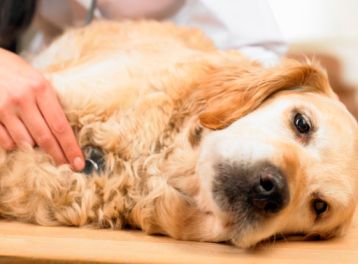ClinQuiz: Implementing the American Animal Hospital Association's Anesthesia Guidelines (Sponsored by Abbott Animal Health)
The AAHA Anesthesia Guidelines for Dogs and Cats provide recommendations for evaluating and monitoring patients from the preanesthetic period through recovery, selecting premedication and anesthetic induction and maintenance agents, and using anesthetic equipment and monitors. Take this ClinQuiz and learn how individualized anesthetic plans can help you successfully manage each patient you anesthetize.
Click here to view a two-minute video that features Dr. Ralph Harvey introducing the benefits of the AAHA Anesthesia Guidelines.

You need to anesthetize a 14-year-old mixed-breed dog for a dental examination and cleaning, with the expectation that it will require dental extractions.
Your patient is bright, alert, and sedentary; has a calm temperament; and is in good body condition at an appropriate body weight. The dog has a grade 3/6 left apical holosystolic heart murmur. The dog has no signs of heart failure, has no other known medical conditions, and is receiving routine parasite preventives.
The results of a preoperative complete blood count and a serum chemistry profile are within normal limits. The client declines thoracic radiography and further cardiac evaluation.
What are the chief anesthetic management concerns (if any) for this dog?
A. Advanced age, cardiac disease, and analgesia
Which anesthetic plan would be the best option for this patient?
- No premedication
- Intravenous (IV) induction with a dissociative anesthetic agent and a benzodiazepine
- Assurance of airway patency by inserting a suitably sized, cuffed endotracheal tube
- Maintenance with an inhalant anesthetic in oxygen
- Fluid therapy with a balanced electrolyte solution IV at 10 ml/kg/hr
- Monitoring of the patient's body temperature, electrocardiogram (ECG), oscillometric blood pressure, and pulse oximetry
- Provision of a circulating warm-water blanket
- Administration of a nonsteroidal anti-inflammatory agent (NSAID) postoperatively
- Premedication with a phenothiazine tranquilizer/sedative and a weak opioid
- Mask induction with an inhalant anesthetic in oxygen
- Assurance of airway patency by inserting a suitably sized, cuffed endotracheal tube
- Maintenance with an inhalant anesthetic in oxygen
- Fluid therapy with a balanced electrolyte solution IV at 3 ml/kg/hr
- Monitoring of the patient’s body temperature, ECG, oscillometric blood pressure, and pulse oximetry
- Provision of a circulating warm-water blanket
- Administration of a weak opioid postoperatively
- Premedication with an anticholinergic and a strong opioid
- Pre-oxygenation by face mask
- Anesthetic induction with the combination of a low-dose dissociative anesthetic and a rapid-acting hypnotic agent, given IV to effect
- Assurance of airway patency by inserting a suitably sized, cuffed endotracheal tube
- Maintenance with an inhalant anesthetic in oxygen
- Fluid therapy with a balanced electrolyte solution IV at 3 ml/kg/hr
- Monitoring of the patient’s body temperature, ECG, oscillometric blood pressure, and pulse oximetry
- Provision of a circulating warm air blanket
- Administration of an NSAID for several days postoperatively and taper the dose as needed
Which pain management strategy would be the best choice for this dog?
The procedure went well, and regular monitoring and recording of the dog's anesthetic depth, oxygenation, ventilation, temperature, and cardiovascular function revealed no clinically relevant abnormalities. The patient required extraction of two maxillary incisors, one maxillary canine tooth, and one mandibular canine tooth. The dog is recovering from anesthesia and receiving supplementary oxygen, with the endotracheal tube in place. The dog's blood pressure and pulse oximetry measurements are within normal limits. After 30 minutes, however, the patient is still deeply asleep and intubated. What are the possible explanations for this delayed recovery, and what should you do for this patient?
Anesthesia is intended to be a benign process, but anesthetic morbidity and mortality are real problems. The incidence of anesthetic deaths in dogs and cats is greatest during which phase of care?
A. Preanesthetic restraint and sedation
B. Induction of anesthesia and endotracheal intubation
C. Maintenance of anesthesia with inhalant agents
D. Postoperative anesthetic recovery
For additional details, see the AAHA Anesthesia Guidelines for Dogs and Cats, the AAHA Anesthesia Guidelines Toolkit, a Toolkit supplement, a brief video,"Best Practices for Pet Anesthesia," and a webcast seminar, "The AAHA Anesthesia Guidelines in Practice."
Dr. Ralph Harvey is an associate professor of anesthesiology in the Department of Small Animal Clinical Sciences at the University of Tennessee College of Veterinary Medicine, where he has been a member of the faculty since 1985. He served as the Director of Surgical Services from 1993 through 2000. He is certified as a specialist by the American College of Veterinary Anesthesiologists and has served as the ACVA's Executive Secretary and as a member of the ACVA Board of Directors.